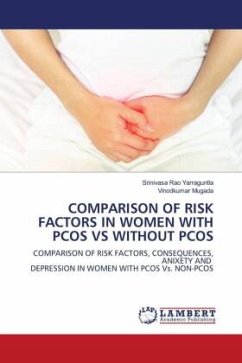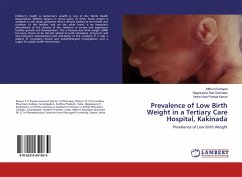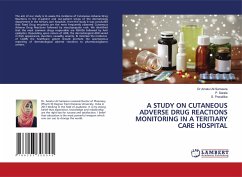
Tuberculosis Prevalence, Risk Factors & Treatment for Adverse Effects
Tuberculosis Prevalence and Adverse Reactions due to Anti-TB drugs
Versandkostenfrei!
Versandfertig in 6-10 Tagen
33,99 €
inkl. MwSt.

PAYBACK Punkte
17 °P sammeln!
Tuberculosis is termed as 'TUBERCLE' which means round nodule and 'OSIS' which means condition. Mycobacterium tuberculosis in human and Mycobacterium bovis in animals are the organisms which cause tuberculosis. Mycobacterium tuberculosis is small, aerobic, nonmotile bacillus. The other causative organisms are Mycobacterium africanum and Mycobacterium microti. The non-mycobacterium genuses are Mycobacterium leprae, Mycobacterium avium, Mycobacterium asiaticum. The M. Tuberculosis complex consists of M. africanum, M. bovis, M. canetti, and M. microti. The estimated prevalent cases in 2012 were a...
Tuberculosis is termed as 'TUBERCLE' which means round nodule and 'OSIS' which means condition. Mycobacterium tuberculosis in human and Mycobacterium bovis in animals are the organisms which cause tuberculosis. Mycobacterium tuberculosis is small, aerobic, nonmotile bacillus. The other causative organisms are Mycobacterium africanum and Mycobacterium microti. The non-mycobacterium genuses are Mycobacterium leprae, Mycobacterium avium, Mycobacterium asiaticum. The M. Tuberculosis complex consists of M. africanum, M. bovis, M. canetti, and M. microti. The estimated prevalent cases in 2012 were around 12 million, corresponding to 169 cases per one lakh population. TB prevalence is declining from the early 1990's (before incidence started to decline). This is largely due to the introduction of DOTS strategy, which may have contributed to the reduction of chronic and cases which are untreated and duration of illness. Most important risk factor globally is HIV; 13% of people with TB are infected by the virus. Chronic lung disease is one of the risk factors. Silicosis increases the risk about 30-folds. Cigarette smokers have nearly twice the risk of TB compared to nonsmokers.












